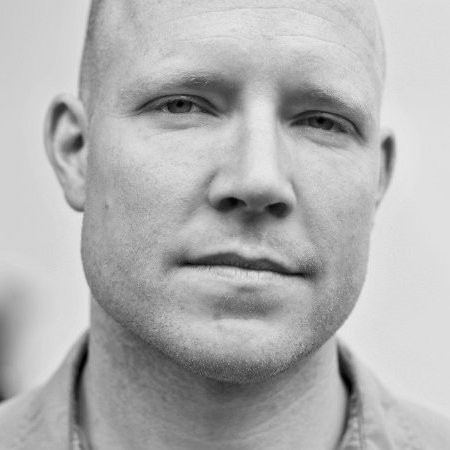Or listen in your favorite podcast app
Apple Podcasts / Google Podcasts / Stitcher
Brett Wingeier (LinkedIn, Twitter) always dreamed of building things that could change the world. Those dreams led him to biomedical engineering and, eventually, to co-founding Halo Neuroscience, which is creating products that are breaking new ground in stimulating the brain to become more productive or high performing.
On this episode of IT Visionaries, Brett talks about all the science, research and development that goes into creating wearable hardware, plus he details everything Halo has been working on and what he’s most excited about for the future.
Best advice: “While keeping the dream alive …stuff doesn’t always turn out the way you expect it will, but if you’re prepared for it, you’ll make it out okay.”
Key Takeaways:
Brett’s Origin Story — (1:30)
Brett was always interested in science and building so after finishing school, he went into biomedical engineering and working with medical devices. While doing that work, he saw the field of neuroscience growing — people were looking into ways to make your brain function better — and the wearables market was beginning to really take shape. Brett was interested in that as well, and saw a need for a new product that could disrupt the field because there was science about improving functionality, but no one was making a product that was actually doing it.
“As a kid, I wanted to build stuff. I knew that’s what I wanted to do with my life. So I got into biomedical engineering and brain science because it was really one of the last frontiers of figuring out the fundamental principles, how do we make products that help brains work better.”
Building Halo — (6:00)
Originally, Halo was purely research and development. For the first year of its existence, Halo focused on the science behind brain functionality. In the second year, Halo shifted to product design. Finally, they shifted to manufacturing and distribution in their third year. The process took a lot of time because not only was Halo developing a product, but that product also had to fit multiple body types and look decent on everyone. Dealing with different head types and hair types was an unexpected challenge that the Halo team had to work through.
The ultimate result of that hard work was Halo’s first product, a pair of headphones called Halo Sport that stimulates parts of your brain that are involved with muscle memory.
“The underlying principles are fairly simple — it’s about making something that you can put in people’s hands and it will work wherever and whenever.”
“The only thing harder than a hardware startup is a hardware startup that’s making a product that interacts with the body and has to fit well and has to look good.”
Working with Athletes and Special Ops— (11:50)
Athletes and those in the armed forces are naturally going to push their limits and try to find a way to get the best possible output from their body. That’s why they were perfect customers for Halo. No matter how hard you train, your body needs to recover, so you’re limited in that sense. Plus, the more you train, the less time you have to recover or learn any other kind of skills. Halo was offering a way to get more out of training without actually doing more so that there was more time for everything else.
When Brett and his team handed off the prototypes of their products to these customers, it was the first time anyone was using Halo technology and not looking at it as precious. These athletes and special ops personnel were using, abusing and wearing out the products, which gave Brett and his team their first use case for just what the technology was capable of and good for.
“When your whole career is a quest for high performance, there’s this great enthusiasm for technologies that help you get there and help you get there better.”
“If you’re pushing your body to the limits, then the amount that you can train is not so much limited by the normal factors the rest of us face. It’s limited by the fact that your body just has to recover.”
What does innovation look like? — (19:30)
Halo is still relatively small and a lot of what it does is still research. The scientists they have on board are constantly doing research and experiments to figure out the science behind the products. They mix with an academic group looking at use cases and then they all work with the various engineering departments to create something that works.
“We have to be thinking six months or two years in advance to make sure that we’re making the right decisions.”
Taking on the role of Co-founder and CTO — (24:20)
Halo is Brett’s first rodeo as a start-up founder and the sheer breadth of the role and responsibilities is one of the things he needed to adjust to. There are so many things that have to go right, and because you are responsible for all of those things, there is a lot more at stake.
But Brett was willing to take on the challenge because of his history of wanting to build things that could make an impact.
“There are so many things you have to make sure go right when you’re building a company.”
“Building a company is another way to make a difference in the world and to do something that scales beyond yourself.”
Creating a new market — (31:00)
Brett explains that the market for consumer neurotech is brand new, so the team at Halo has to do a lot of selling and convincing buyers that their products are real and helpful. You have to be authentic and truthful so that there is trust built between company and customer. And then it’s about following up with them afterward to find out what worked, what didn’t and how you can improve.
“It’s easy to talk about it in a way that comes off as being fluffy or sensationalist. You know, we are stimulating the brain and that’s exciting for some people. But there’s some trepidation there and it’s also a field where historically, honestly, it can be easy to wave your hands and talk about the brain and just make a lot of noise about some kind of technology. So we’ve always felt the need to be very rigorous about how we talk about this technology to be very clear about what it can and can’t do.”
The future of neurotech — (33:00)
There is no telling where this industry or the technology will go. Brett explains that the underlying science is extremely exciting, but developing products to capitalize on that science is always the challenge. And the products aren’t going to be built just for athletes or high-performance type people. There could be applications to treat mental illness, PTSD, to do rehab and physical therapy and so many other practical uses. The bottom line, Brett says, is that neurotech can be used to make people more productive in any number of ways, and that’s something to be excited about.
“The brain is everything. And there is an amazing opportunity that’s now backed up by good science.”
“These technologies help your brain work better. It’s the ultimate productivity tool and it’s the ultimate tool that helps people unlock their potential and get done what they need to get done.”




